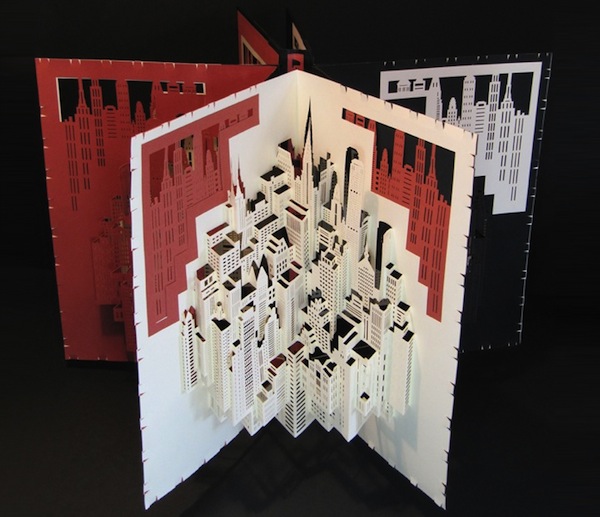The ubiquitous paper has found favor among imaginative artists and this has resulted in a new kind of art form, which is referred to paper architecture. Paper may not be the most steady material out there, but it is an indispensable tool for reproducing representations of buildings and other architecture.
Paper artist Ingrid Siliakus who hails from Amsterdam has been creating waves in art circles with her stunning Paper Architecture series. At first look, the Paper Architecture series seems to be an anti-thesis of the traditional design trajectory, but dig a deep further and you will realize that Siliakus is paying homage to the maestros in her own inevitable way. Inspired by Prof. Masahiro Chatani (architect and professor in Japan), her renderings are objects created out of a single piece of paper and remind us of the pop-up books that fascinated as kids.
Each design requires at least thirty prototypes, and the first step requires her building a layer with a single shape and then adding layer after layer. To achieve a stunning 3D work of art, Siliakus also needs to master the art of cutting and folding. Again, we can’t help but mention its resemblance to pop-up books, as many of the paper sculptures are capable of folding onto themselves and also change proportions, depending on the angle.
The Paper Architecture series epitomizes the artist’s skills and her attention to detail. The paper structures look like 3D blueprints for a real city and the process of adding layer after layer to change the architecture reminds me of the scenes from Christopher Nolan’s Inception, when Ariadne changes the architecture around her.
The changing skylines, the endless cityscapes and the architectural landscapes have a sublime quality to it, which is further heightened using only a monochromatic color palette. So if you are a fan of architecture or a purveyor of unique art forms, then do catch the artist’s exhibition at Erve Kots, which is on until February 29, 2012.
Says the artist:
“Paper architecture does not bare haste, it is its enemy; one moment of loss of concentration, can lead to failure of a piece…’ ‘…I experience an ultimate satisfaction at the critic moment when the paper, with a silenced sigh, surrenders and becomes a blade-sharp crease. The sound of the paper, which guides this surrendering, to me is incomparable…”












